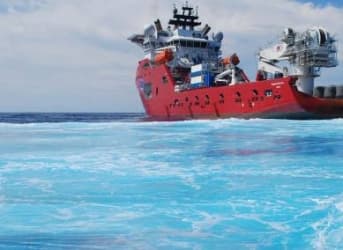Subsea 7 announced on July 13 that it has agreed to form a global alliance with OneSubsea, forming a partnership to build subsea oil and gas production systems.
OneSubsea is a company formed by Cameron International and Schlumberger, two offshore oil service companies. It builds subsea production systems, which consist of equipment installed at the bottom of the ocean floor that produce oil and gas, and then pipe the hydrocarbons to a ship located at the surface of the sea.
The alliance between Subsea 7 and OneSubsea will allow for them to “jointly design, develop and deliver integrated subsea development solutions through the combination of subsurface expertise, subsea production systems (SPS), subsea processing systems, subsea umbilicals, risers and flowlines systems (SURF) and life-of-field services,” Subsea 7 said in a press release. Related: Historic Deal With Iran Opens Up Oil Industry
Subsea production systems have become increasingly common in offshore drilling. They were originally developed for production in harsh environments, where processing from a conventional ship or platform at the surface was difficult.
But subsea production systems also have cost advantages. Installed at the seafloor, multiple subsea production systems can be installed near each other, each pumping oil and tying back to just a single vessel. This can improve efficiency and reduce cost. Related: OPEC, Get Ready For The Second U.S. Oil Boom
Also subsea systems can remove water, sand, and natural gas at the seafloor, allowing for less liquid volume to be pumped to the ship, saving space and thus reducing cost. Subsea systems can also improve the productivity of marginal or aging wells.
The alliance between Subsea 7 and OneSubsea will create synergies, the press release argues. It will “bring together Subsea 7's experience and technology in seabed to surface engineering, construction and life-of-field services with OneSubsea's unique reservoir expertise and state-of-the-art subsea production and processing systems technologies.” Related: Shale Industry May Need A Complete Rethink To Survive
In short, the companies believe they will be able to improve the economics of subsea projects for their clients, which are oil exploration and production companies. That could open up new offshore oil fields for development, allowing for more oil production at a lower cost.
Although subsea production systems are a relatively new technology, the market for them is growing quickly. Brazil, West Africa, the Gulf of Mexico, and the North Sea have accounted for the vast majority of the market to date.
By Charles Kennedy of Oilprice.com
More Top Reads From Oilprice.com:

















